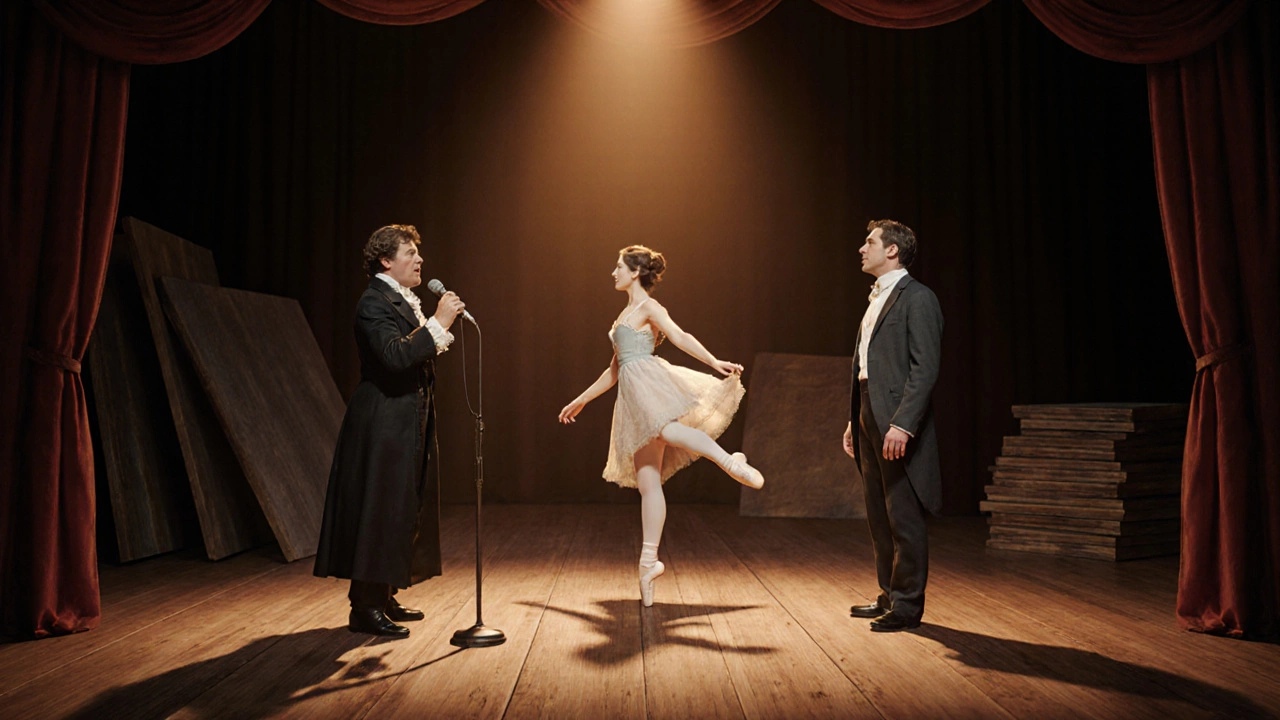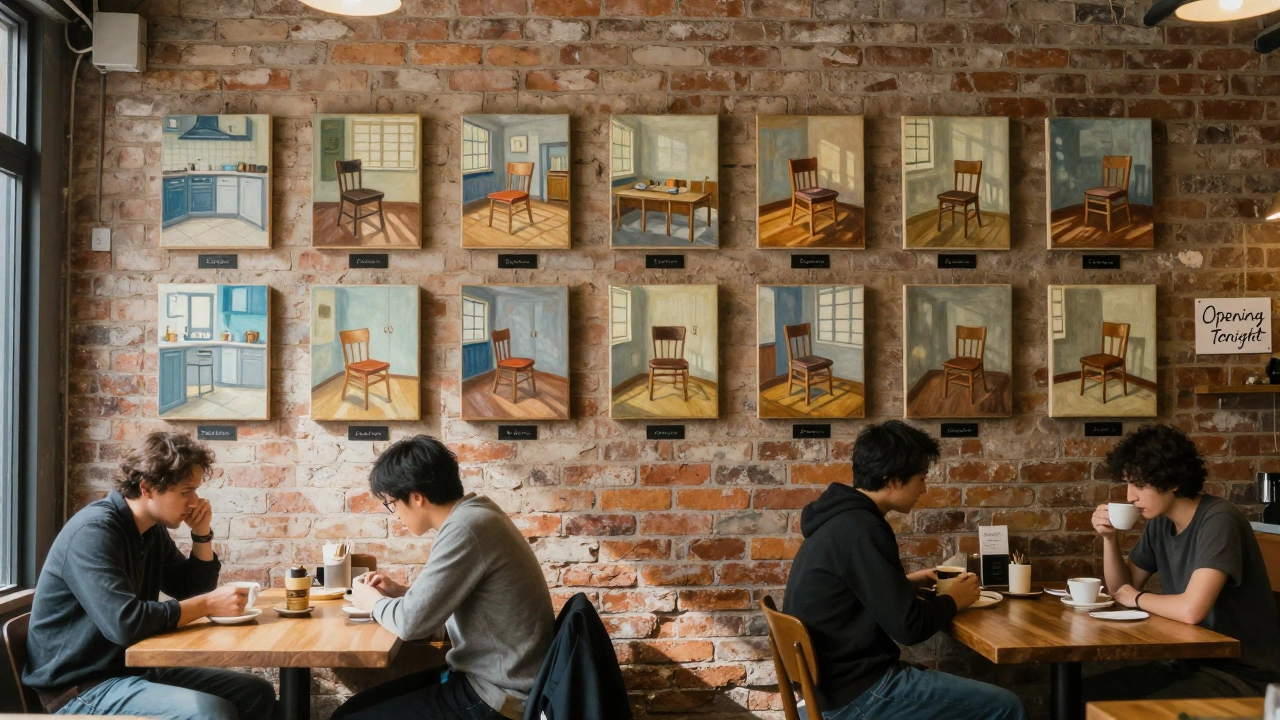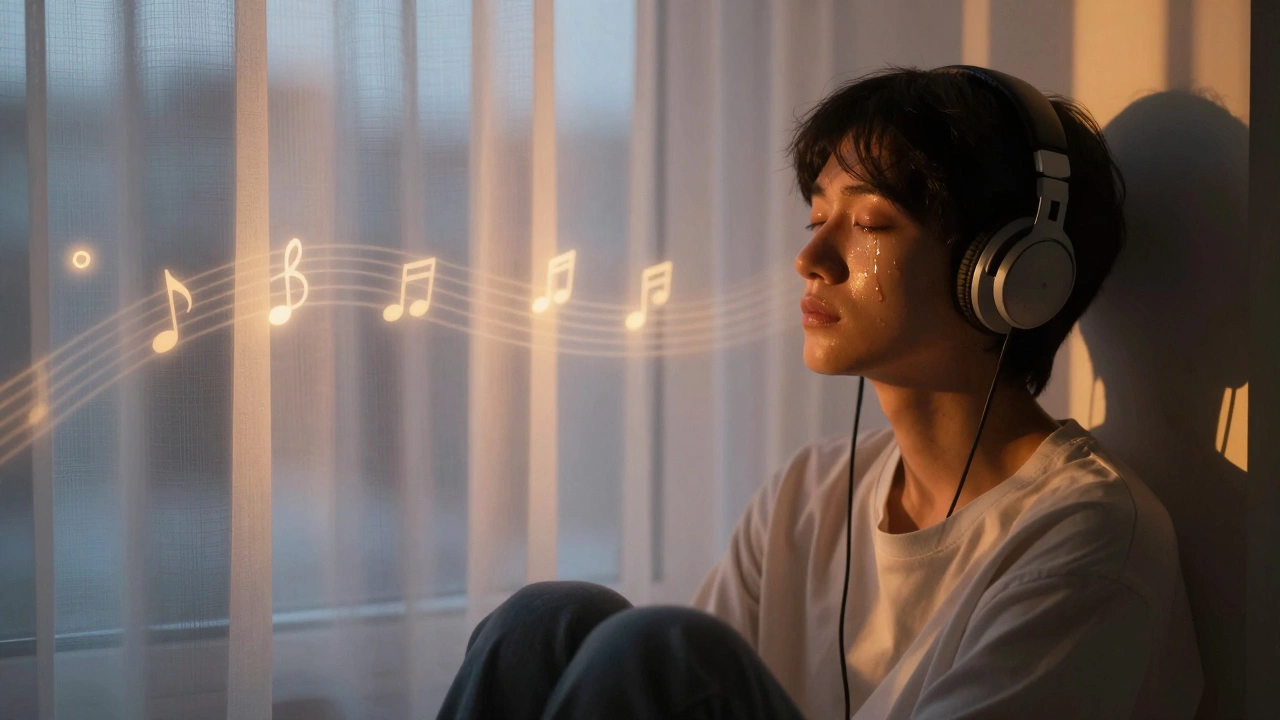Ever wonder which show can truly claim the title of the oldest musical? The answer isn’t as simple as picking the first Broadway hit or the first Hollywood adaptation. It requires digging into how drama, song, and dance first fused on stage. Below we’ll untangle the clues, meet the productions that sparked the genre, and see why one particular 1866 extravaganza gets the credit.
What actually defines a musical?
Before naming a winner, we need a clear definition. A musical is more than a play with a few songs thrown in; it’s a story where songs, spoken dialogue, and movement work together to advance the plot and deepen character. The three hallmarks are:
- Integrated music: songs aren’t stand‑alone numbers; they echo the narrative beat.
- Choreographed movement: dance pieces help tell the story, not just entertain.
- Unified production design: sets, costumes, and lighting support the musical’s world.
When you see a work that checks these boxes, you’re looking at a musical in the modern sense.
The Black Crook is a 1866 New York stage spectacular often called the first modern musical
The production that most scholars point to as the first true musical opened at Niblo’s Garden on September 12, 1866. The Black Crook blended a melodramatic plot with over 100 ballet numbers, elaborate scenery, and a full orchestra. Its creator, producer John B. H. Selby, borrowed a European pantomime and bolted in original songs by Thomas Baker and Charles L. Perraut. The result was a 5‑hour marathon that kept audiences glued for decades - it ran for 474 performances, a record for its era.
Why does it stand out? The show didn’t just slip a few tunes into a drama. The music, choreography, and visuals were woven tightly into the storyline about an outlaw named St. John and his doomed romance. Critics of the day called it a “new form of theatrical entertainment,” and historians still cite it as the birth moment of American musical theater.
Earlier stage works that flirted with music
Some older pieces certainly mixed spoken dialogue with song, but they often treated music as a decorative interlude rather than an integral part of storytelling.
- The Beggar’s Opera is a 1728 ballad opera by John Gay that satirized Italian opera and introduced popular tunes into a theatrical setting. It used well‑known folk songs with new lyrics, creating a catchy but episodic structure.
- Victorian melodramas such as The Jollity of the Guild (1840s) often featured a single “entr’acte” song, but the narrative still moved mainly through spoken scenes.
- French operettas like Le Roi d’Yvetot (1860) leaned heavily on melodic numbers, yet the spoken dialogue remained the primary driver.
These productions were important stepping stones, but they lacked the seamless integration that defines a musical today.
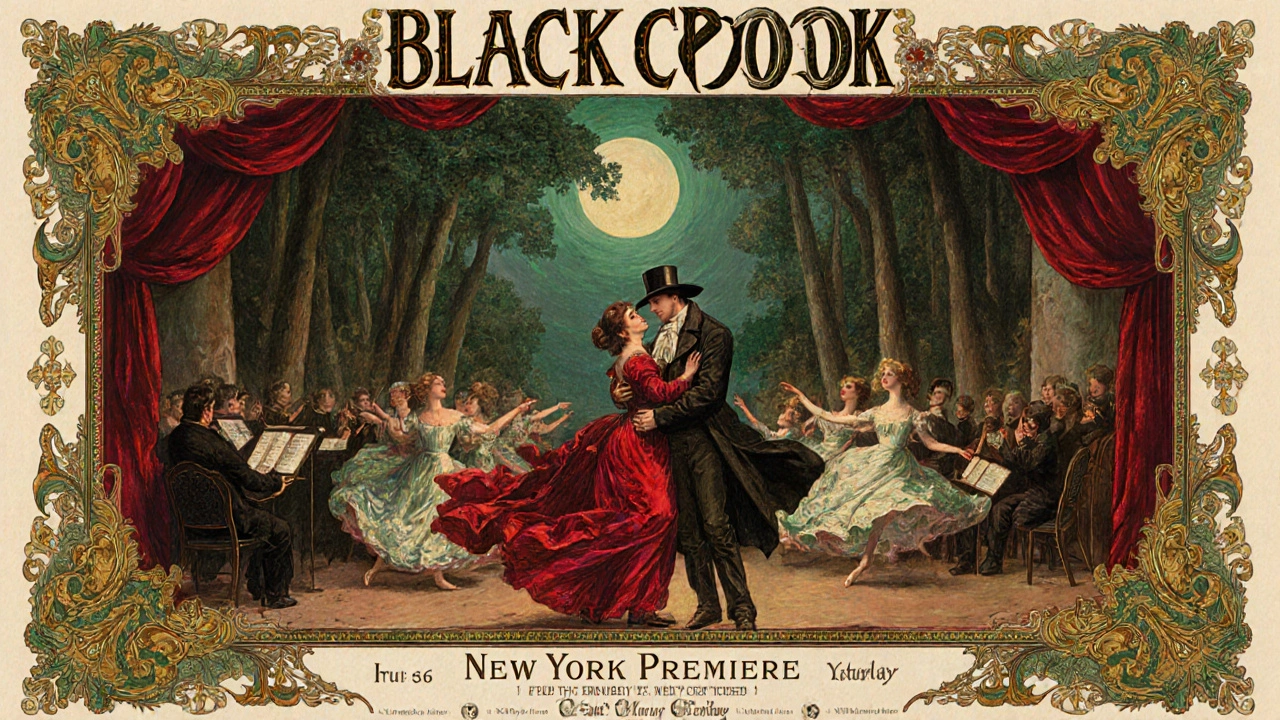
How musical theater grew after The Black Crook
Once The Black Crook proved that a hybrid of drama, song, and dance could be a blockbuster, producers across the Atlantic took notice.
In the late 19th and early 20th centuries, two parallel strands emerged:
- Operetta - Light‑hearted European works by composers like Johann Strauss II and Franz Lehár that emphasized waltzes and romantic plots.
- American musical comedy - Shows such as Show Boat (1927) and Oklahoma! (1943) that pushed the integration further, using songs to deepen characters.
Both streams fed into the modern Broadway and West End ecosystems. Broadway is the hub of American commercial theater in New York City, famed for its large‑scale productions and West End is London’s premier theater district, home to long‑running musical classics. The standards set by The Black Crook - lavish scenery, ensemble dance, and integrated songs - became the template for later hits.
Comparison: The Black Crook vs. The Beggar’s Opera
| Aspect | The Black Crook | The Beggar’s Opera |
|---|---|---|
| Premiere year | 1866 | 1728 |
| Primary genre | Melodrama with integrated music & dance | Ballad opera (satirical comedy) |
| Integration of music | Songs advance plot; choreographed ensemble numbers | Existing folk tunes with new lyrics; music as set piece |
| Length of run (initial) | 474 performances (record‑breaking) | Short run; quickly revived |
| Legacy | Marked birth of modern American musical theater | Influenced later ballad operas but not musical theater structure |
The table makes it clear why historians tip the hat to The Black Crook. It wasn’t just the first to include songs - it was the first where every theatrical element was designed to serve the story.
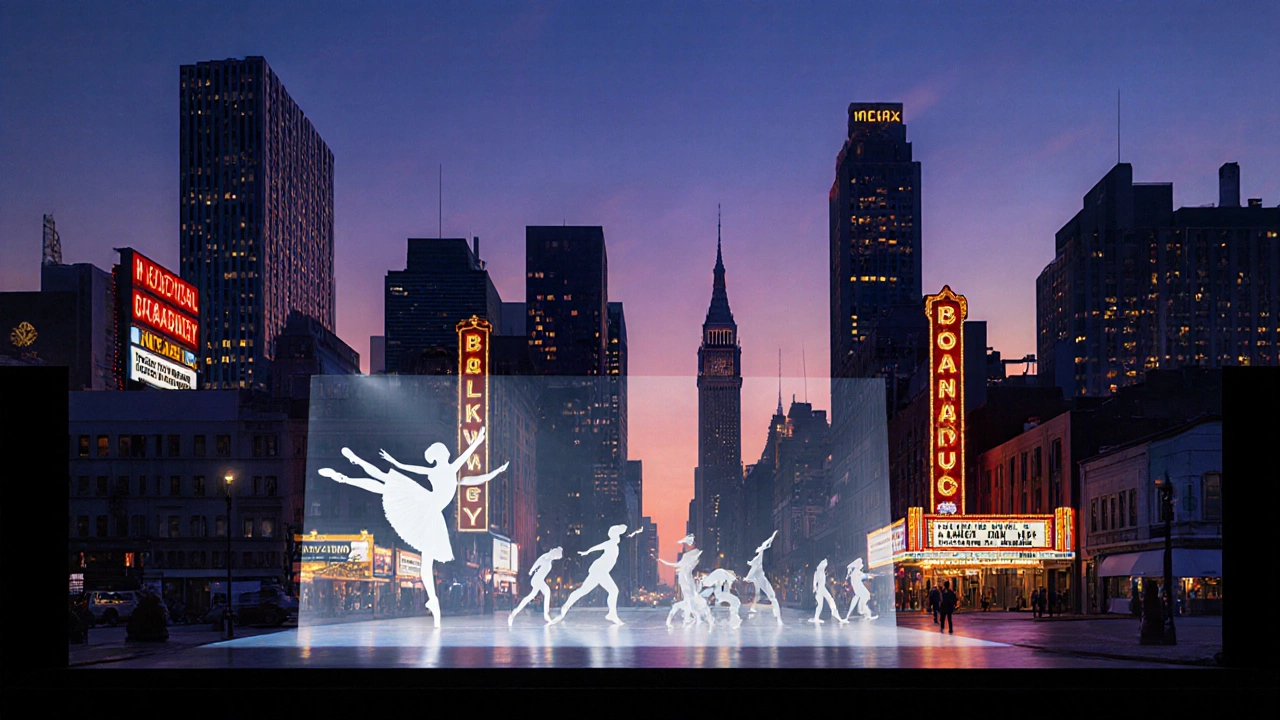
Key takeaways and where to explore further
- Define a musical by its integrated use of song, dialogue, and dance.
- The Black Crook (1866) satisfies those criteria and set the commercial standard.
- Earlier works like The Beggar’s Opera introduced music to the stage but stayed episodic.
- After 1866, operetta and American musical comedy pushed the form toward today’s Broadway hits.
- To dig deeper, check out the Library of Congress archives for original scripts of The Black Crook, or listen to a modern revival recording on the “Encores!” series.
With this roadmap, you can trace the lineage from a 19th‑century spectacle to the dazzling productions lighting up Times Square tonight.
Frequently Asked Questions
Is The Black Crook the first musical ever?
Most scholars agree that The Black Crook is the earliest work that fully integrates music, dance, and narrative, making it the first modern musical. Earlier pieces featured songs but treated them as add‑ons rather than story drivers.
How does a ballad opera differ from a musical?
Ballad opera, exemplified by The Beggar’s Opera, substitutes existing folk tunes for original scores and usually keeps dialogue separate from the music. Musicals use original compositions and blend song with plot progression.
Did The Black Crook influence European theater?
Yes. Its success sparked interest across the Atlantic, encouraging London producers to experiment with larger‑scale musical spectacles. The West End eventually adopted similar production values, leading to works like The Merry Widow (1905).
Where can I watch a modern staging of The Black Crook?
A full revival is rare, but excerpts appear in the Encores! concert series and occasional regional theater productions. Check the archives of the New York Public Library for recorded performances.
What are good books to read for early musical theater history?
Consider Broadway: The American Musical by Michael Kantor, and Operetta: A Theatrical History by Richard Traubner. Both cover the period from The Beggar’s Opera to the Golden Age of Broadway.
